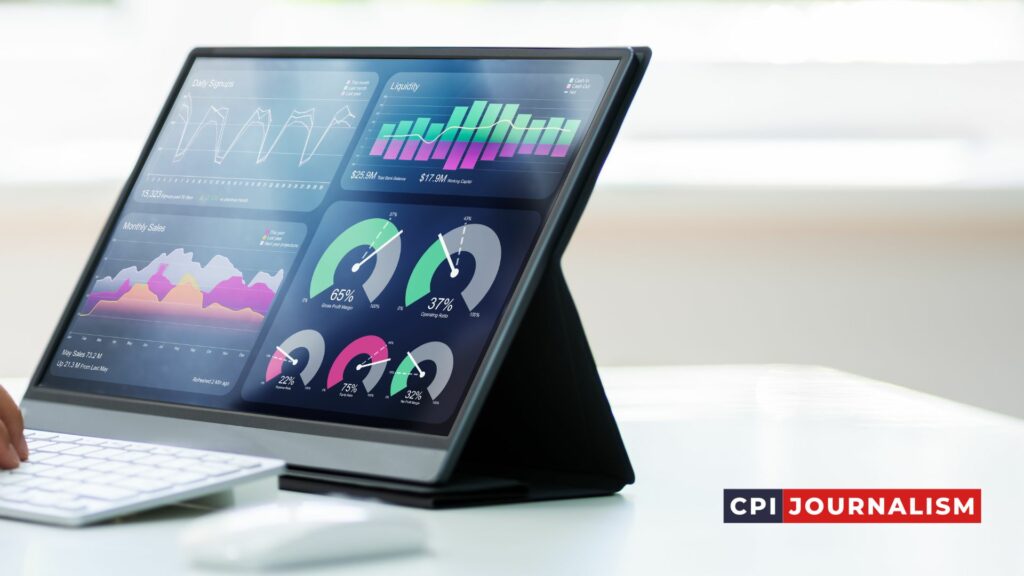How Do Journalists Use Data Analysis and Visualization Techniques to Communicate Investigative Findings to the Public?
As an experienced journalist, I have seen the increasing use of data analysis and visualization techniques to communicate investigative findings to the public and to create compelling stories.
These techniques provide journalists with the ability to draw out patterns, trends, and insights from large amounts of data, which can be used to inform the public and to create a more detailed and engaging narrative.
In this article, I will discuss how journalists can use these data analysis and visualization techniques to communicate investigative findings to the public in a more meaningful and effective way.
A. Definition of Data Analysis and Visualization Techniques
Data analysis and visualization techniques are methods used by journalists to explore and explain the data they have collected. Through these techniques, journalists can identify trends, uncover patterns, and draw meaningful conclusions from their research.
Data analysis and visualization techniques are essential tools in the investigative journalist’s toolbox, allowing them to communicate their findings to the public in an effective and engaging manner.
Data analysis is the process of collecting, organizing, modeling, and interpreting numerical or qualitative information. It involves identifying patterns and trends in the data, and using these insights to draw conclusions and answer questions.
Data analysis can be used to uncover valuable insights, such as the impact of a particular policy or program, or to identify potential areas for further investigation.
Data visualization is the process of taking data and transforming it into a graphical representation. Through data visualization, journalists can make complex information more accessible, enabling them to better communicate the results of their investigations to the public.
Journalists often use charts, graphs, and maps to visualize data, allowing readers to quickly understand the key findings of an article.
In summary, data analysis and visualization techniques are essential tools for investigative journalists, allowing them to explore, explain, and communicate their findings in a clear and engaging way.
B. Overview of Investigative Journalism
Investigative journalism is a form of journalism that involves researching and reporting on difficult and complex topics that are often overlooked or hidden from the public view. It is a type of journalism that seeks to uncover the truth about a particular issue or story.
Investigative journalists often rely on data analysis and visualization techniques to uncover patterns, trends, and relationships that can help them uncover the truth.
Data analysis and visualization techniques are powerful tools that investigative journalists can use to make sense of large amounts of data and present the findings in an easy-to-understand format.
Data analysis can help investigative journalists identify trends and patterns in the data that can provide important insights into the story they are working on.
Visualization techniques, such as charts and graphs, can help journalists turn the data into a visually appealing and easy-to-understand format that can be shared with the public.
Investigative journalism is an important part of a functioning democracy. Investigative journalists have a duty to uncover the truth and report it accurately to the public.
Data analysis and visualization techniques can be powerful tools to help investigative journalists communicate their findings in a way that is both easy to understand and visually appealing.
C. Benefits of Using Data Analysis and Visualization Techniques
Data analysis and visualization techniques can provide journalists with powerful tools for investigating, organizing, and communicating complex stories.
Using these techniques, journalists can quickly and effectively identify patterns, recognize trends, and explain complicated topics in an easily understandable format.
Furthermore, these techniques can help journalists to quickly and accurately validate their findings and provide evidence to support their stories.
The use of data analysis and visualization techniques also allows journalists to present their findings in creative and compelling ways that can engage readers and spark conversations.
By utilizing graphics, charts, and interactive elements, journalists can bring their stories to life, drawing the reader into the story and making the findings more accessible and relatable.
This can also help journalists to reach a wider audience and maximize the impact of their stories.
Finally, data analysis and visualization techniques can help journalists to uncover stories that would otherwise remain hidden.
By exploring and analyzing large datasets, journalists can uncover deeper insights and uncover stories that would otherwise remain undiscovered.
This can help to uncover previously unknown stories and lead to important breakthroughs in investigative journalism.
II. How Journalists Use Data Analysis and Visualization Techniques
Data analysis and visualization techniques are essential tools for journalists to effectively present their investigative findings to the public. By applying these techniques, journalists can objectively and accurately portray the story behind the data.
Data analysis involves the process of collecting, organizing, analyzing, and interpreting data to draw meaningful conclusions. It requires the journalist to understand and interpret the data in order to tell a story.
For example, a journalist could use data analysis to identify patterns in the data and draw conclusions from those patterns.
Data analysis can be used to answer questions such as: what is the trend in a particular issue? How have certain policies and events impacted the population?
Visualization techniques are also important for journalists to communicate their findings. Visualizations such as graphs, charts, and maps can be used to present complex data in a more understandable way.
They can help to illustrate relationships between different variables and provide insight into larger trends. Visualizations also help to make data more accessible to the public by providing a visual representation of the data.
In addition to data analysis and visualization techniques, journalists must also employ ethical practices in order to ensure accuracy and objectivity in their reporting.
For example, journalists must ensure that their reporting is based on reliable sources and that the data is presented in a fair and balanced manner.
It is also important for journalists to be transparent about their sources and methods in order to maintain the trust of their readers.
By utilizing data analysis and visualization techniques, journalists are able to effectively communicate their investigative findings to the public in an accurate and accessible way. These techniques enable journalists to objectively and accurately portray the story behind the data.
A. Collecting and Analyzing Data
As a journalist, one of the most important steps of data analysis and visualization is collecting and analyzing data. As with any investigation, proper research and data collection is essential to uncovering the truth.
A journalist should be familiar with different data collection methods, such as surveys, interviews, and focus groups, as well as secondary sources such as government records, public records, and media reports. A critical eye should be applied to all sources to ensure accuracy, reliability, and validity.
Once data is collected, it must be analyzed to uncover relevant patterns, trends, and relationships. This analysis will inform the journalist’s reporting and visualization.
Journalists should be familiar with a variety of analysis methods, such as descriptive statistics, correlation analysis, and regression analysis, to name a few.
The analysis should be tailored to the specific investigative question and should be detailed enough to draw meaningful conclusions.
Finally, journalists should be aware of the ethical considerations of data collection and analysis. It is important to ensure that the data is not used to misrepresent or distort the truth, and that all sources are cited properly.
Additionally, journalists should be aware of any privacy issues associated with data collection and take steps to ensure that personal information is not revealed in their reporting.
B. Creating Visualizations
Creating visualizations is an important step in communicating investigative findings to the public. Visualizations can help to quickly and effectively convey complex data in an easily understandable way.
As a journalist, it is important to be aware of the various types of visualizations available and how to use them to best illustrate data.
The most commonly used types of visualizations are charts and graphs, maps, and timelines. Charts and graphs are used to visualize numerical data, such as percentages or averages, and can help to quickly compare differences between different groups.
Maps are used to visualize geographical data, such as population density or election results, and can help to show trends across a region. Timelines are used to visualize data over time, such as changes in the stock market or crime rates, and can help to show the progression of a story.

When creating visualizations, it is important to consider the audience. Different types of visualizations may be better suited to different audiences.
For example, a bar graph may be more effective for an audience with a basic understanding of data, while a heat map may be better for an audience with a more advanced understanding of data. Additionally, it is important to consider the type of data being visualized.
Different types of data may require different types of visualizations in order to effectively communicate the story.
Finally, it is important to consider the aesthetics of the visualization. Visualizations should be visually appealing and easy to understand. Using colors, labels, and other design elements can help to make visualizations more visually appealing and easier to understand.
By understanding the different types of visualizations available and how to use them effectively, journalists can create powerful visualizations that help to communicate investigative findings to the public.
C. Presenting Findings
When presenting findings from an investigative data analysis, it is important to communicate the results clearly and effectively to the public. As an experienced journalist, I recommend following a few key steps to ensure successful communication:
1. Make sure to simplify the data and create easy-to-understand visuals. One of the most important aspects of communicating investigative findings is to ensure that the public can understand the results.
To accomplish this, it is essential to simplify complex data into an easily digestible format. This includes utilizing various data visualization techniques to create visuals such as charts, maps, and diagrams.
2. Use the data to tell a story. When presenting the data, it is important to make sure to tell a story.
This includes clearly articulating the key findings and connecting them to a larger narrative. This helps to ensure that the public can understand the importance of the data and its implications.
3. Use language that is accessible to the public. When presenting the data, it is important to use language that is accessible to the public. This means avoiding technical jargon and using language that is easy to understand.
Additionally, it is important to make sure to explain any complex terms or concepts that may be unfamiliar to the public.
By following these simple steps, journalists are able to effectively communicate investigative findings to the public. Presenting data in a clear and accessible way is essential to ensure that the public is able to understand the implications of the findings.
III. Benefits of Using Data Analysis and Visualization Techniques
For journalists, using data analysis and visualization techniques can have many benefits. It can help to create compelling narratives that are more engaging to readers and viewers, as well as giving a more accurate representation of the facts and findings.
By using data analysis and visualization techniques, journalists can better communicate their investigative findings to the public.
These techniques can provide a more detailed and in-depth look at the data, and can help to create more visual and engaging stories. This can help to draw in more readers and viewers, as they are more likely to be interested in the story.
Data analysis and visualization techniques can also help to create accurate representations of the data. By combining data, visualizations, and storytelling, journalists can create more precise and detailed stories that are more likely to be accurate and conveys the facts in a more effective way.
This can help to ensure that the public is more informed and better understands the investigative findings.
Finally, data analysis and visualization techniques can help journalists to save time and resources. By using these techniques, journalists can quickly analyze and visualize large datasets, allowing them to focus on other parts of their investigation and effectively communicate their findings in a shorter amount of time.
In conclusion, using data analysis and visualization techniques can be a powerful tool to help journalists communicate their investigative findings to the public.
By using these techniques, journalists can create more engaging, accurate, and detailed stories that will draw in more readers and viewers.
Additionally, these techniques can help journalists to save time and resources, making it easier to effectively communicate their findings in a shorter amount of time.
A. Enhancing Storytelling
Data analysis and visualization techniques are invaluable tools for journalists to enhance storytelling in investigative reports. By employing these techniques, journalists can better communicate the complexities of the investigation, including the context, evidence, and findings.
One of the most effective techniques for enhancing storytelling is the use of infographics and data visualizations. Journalists can use these tools to quickly communicate complicated information in an easy-to-understand visual format.
Infographics and data visualizations can also help to illustrate trends, patterns, and relationships that would otherwise be difficult to comprehend.
Another useful storytelling tool is the use of interactive data visualizations. These allow readers to explore the data on their own and discover new insights. Interactive data visualizations also have the advantage of allowing journalists to present their data in a more engaging way.
Finally, journalists should also consider using interactive maps to enhance their storytelling. Maps are a powerful tool for communicating information and can be used to illustrate patterns and relationships between geographical areas.
They can also be used to provide readers with a deeper understanding of the investigation.
In summary, data analysis and visualization techniques are invaluable tools for enhancing storytelling in investigative reports.
Through the use of infographics, data visualizations, interactive data visualizations, and maps, journalists can better communicate the complexities of the investigation, including the context, evidence, and findings.
B. Making Complex Data Easier To Understand
In journalism, data analysis and visualization techniques can be used to communicate investigative findings to the public in a way that is easy to understand and comprehend.
This process involves breaking complex data down into more manageable chunks and creating visual representations of the data that make it easier to follow and understand.
One way to make complex data easier to understand is to use charts and graphs. Charts and graphs can be used to illustrate trends and patterns in the data that may be difficult to detect otherwise.
They can also be used to compare different sets of data and see how they differ. Additionally, charts and graphs can be used to show the relationships between different data points, making it easier for readers to see how the data are connected.
Another way to make complex data easier to understand is to use storytelling techniques. This involves using the data to tell a story, which helps to engage the reader and make it easier for them to digest and understand the information.
Additionally, data can be used to create interactive visualizations, such as maps and timelines, which can help readers to explore the data in more detail and better understand the findings.
Finally, data can be simplified by using tables and diagrams. Tables can be used to summarize the data and make it easier to compare different sets of data.
Diagrams can also be used to explain a concept or process more clearly, and they can be used to illustrate relationships between different data points.
Overall, data analysis and visualization techniques can be used to make complex data easier to understand and communicate investigative findings to the public.
By breaking down the data into more manageable chunks and creating visual representations of the data, journalists can help readers to better understand the information and make more informed decisions.
C. Increasing Engagement
As a journalist, one of the most important goals is to engage the public with your investigative findings. Data analysis and visualization techniques can help you to achieve this goal by providing an accessible and interactive way for readers to explore your data.
When used effectively, data visualization can help to convey complex information to readers in an easy-to-understand visual form, increasing their engagement with the content.
One of the most successful strategies for engaging readers with data visualizations is to create interactive graphics. Interactive graphics give readers the opportunity to explore the data in more depth, allowing them to make connections and form their own conclusions.
By providing an interactive experience, readers are more likely to form a deeper understanding of the investigative findings, as well as become more engaged with the content.
Another effective strategy for increasing engagement is to create visuals that draw readers in and evoke an emotional response. Visuals should be carefully crafted to be eye-catching and memorable.
Color, fonts, and other design elements should be chosen to make the visual stand out and draw the reader in.
Additionally, you should focus on creating visuals that tell a story, rather than simply presenting data. Visuals that tell stories can evoke emotions in the reader, which can make them more likely to engage with the content.
By using data analysis and visualization techniques to create interactive graphics, eye-catching visuals, and stories that evoke emotions, journalists can effectively increase the public’s engagement with their investigative findings.
IV. Challenges of Using Data Analysis and Visualization Techniques
Data analysis and visualization techniques are powerful tools to communicate investigative findings to the public; however, they are not without their challenges. As an experienced journalist, I have identified a few key challenges that can arise when using these techniques.
First, it can be difficult to ensure accuracy in the data. Journalists must ensure that the data used is accurate, complete, and up to date.
Additionally, the data must be sourced from reliable sources. Journalists must also be aware of potential biases and errors in the data, and take steps to mitigate these issues.
Second, these techniques rely heavily on technology and require a certain level of technical proficiency. Journalists must have an understanding of the technology and algorithms being used to analyze the data, and must be able to interpret the data accurately.
Additionally, they must be able to effectively use the visualization software to create visualizations that accurately represent the data.
Finally, it can be difficult to effectively communicate findings to the public. Journalists must be able to interpret the data accurately, and then translate it into a format that is easy to understand for the public.
Additionally, it can be difficult to ensure that the public understands the implications of the data and the investigative findings.
These are just a few of the challenges that can arise when using data analysis and visualization techniques to communicate investigative findings to the public.
However, with the right skills, experience, and technology, these techniques can be powerful tools for journalists to inform and engage the public.
A. Access to Data
Data analysis and visualization techniques are a critical part of investigative journalism, as they allow journalists to find patterns and connections in large amounts of data. However, they can only be successful if journalists have access to the data they need in the first place.
When it comes to access to data, the key is to start with the sources that are most likely to be available to you. Government and public databases are often the most reliable sources of information, and can provide a wealth of data in a relatively short amount of time.
Additionally, many private companies also make data available to journalists, as long as certain criteria are met.
When requesting data from government sources, it’s important to have a clear understanding of the Freedom of Information Act and what information you are legally entitled to. It’s also important to be aware of the various exemptions that may apply in certain cases.
When requesting data from private companies, it’s important to understand the company’s policies and the type of data they are willing to share. Many companies have strict rules about what data they are willing to provide, so it’s important to be aware of these rules before making a request.
Finally, it’s important to remember that data can come from a variety of sources, including interviews, surveys, and public records.
When it comes to investigative journalism, it’s important to be creative and push the boundaries of what data is available to you. With the right approach, data can be found in some of the most unexpected places.
B. Technical Knowledge
To effectively use data analysis and visualization techniques to communicate investigative findings to the public, journalists need to have a thorough understanding of the technical requirements for these activities.
First and foremost, journalists should have a strong understanding of the different types of data analysis, such as descriptive statistics, inferential statistics, and predictive analytics. This knowledge will help journalists identify the best method to use for a particular investigative task.
Journalists should also be familiar with various data visualization techniques, such as histograms, pie charts, and line graphs. Knowing when to use which type of visualization will ensure that the data is presented in a way that is easy for the public to understand.

In addition, journalists should be familiar with the different software programs available for data analysis and visualization, such as SPSS, Tableau, and R.
Knowledge of these programs will allow journalists to easily create and manipulate data visualizations to effectively communicate their findings to the public.
Finally, journalists should be familiar with digital storytelling techniques. These techniques, such as video, animation, and interactive graphics, can be used to effectively convey complex investigative findings to the public in a way that is engaging and visually appealing.
Familiarity with digital storytelling techniques can help journalists create powerful visuals that can help people understand and remember investigative findings.
C. Time And Resources
Data analysis and visualization techniques can be powerful tools for investigative journalists to communicate their findings to the public. However, these techniques take time and resources to execute properly.
When considering the time required, it’s important to note that data analysis and visualization techniques are not a one-time activity.
They often require multiple iterations and refinements to ensure accuracy and accuracy. Journalists must be prepared to devote a significant amount of time to their data analysis efforts.
In terms of resources, journalists should be aware that data can be expensive to acquire. Depending on the data source, journalists may need to purchase access to the data or pay a fee to obtain the information.
Additionally, journalists may need specialized software to properly analyze and visualize the data.
Finally, it’s important to remember that data analysis and visualization techniques require an understanding of the underlying data.
Journalists need to invest time and resources into learning the basics of data analysis and visualization, as well as understanding the nuances of the data they are working with.
Thus, when using data analysis and visualization techniques to communicate their investigative findings, journalists should be prepared to invest the necessary time and resources to ensure accuracy and accuracy.
D. Ethical Considerations
Journalists have a responsibility to ensure that their data analysis and visualization techniques are ethically sound. It is important to be mindful of the ethical implications of data analysis, as well as its potential for misuse.
First and foremost, it is essential that journalists ensure that their data is accurate and up-to-date. Data-driven journalism should be based on reliable data sources, and journalists should take measures to validate the accuracy of the data they use.
It is also important that journalists take into account the potential impact of their data analysis. Journalists must be aware of the power of data visualizations, and the potential for them to be used to manipulate public opinion.
Visualizations should be chosen carefully to ensure they accurately represent the data and the story being told.
In addition, journalists must be aware of the potential privacy implications of their data analysis. Journalists should take steps to protect the privacy of individuals and organizations whose data is used in the analysis and visualizations.
Finally, journalists should be aware of the potential for their data analysis and visualizations to be used for commercial gain. Journalists should take steps to ensure that their work is not used for commercial purposes without their consent.
By being mindful of these ethical considerations, journalists can ensure that their data analysis and visualizations are used responsibly and in accordance with the highest ethical standards.
V. Conclusion
Data analysis and visualization techniques can be extremely powerful tools for journalists looking to communicate investigative findings to the public.
They can help journalists to uncover meaningful insights, communicate complex information in an engaging way, and make previously hidden relationships visible. However, these tools come with their own set of challenges.
Journalists must be aware of potential pitfalls, such as bias and misinterpretation, and take steps to ensure accuracy and clarity in their reporting.
At the same time, journalists should recognize the tremendous potential of data analysis and visualization to help them tell powerful stories that have the power to shape public perception and drive social change.
With the right approach and attention to detail, data analysis and visualization can be a powerful tool for journalists to use in communicating their findings to the public.
A. Summary of How Journalists Use Data Analysis and Visualization Techniques
Data analysis and visualization techniques are essential components of investigative journalism. They enable journalists to collect, organize, and interpret data in order to communicate their findings to the public.
Journalists use data analysis techniques to identify trends and patterns in data sets and to uncover the stories behind the numbers. Visualization techniques allow journalists to present data in a way that is easily accessible and understandable to the public.
Data analysis techniques such as data mining, text mining, and statistical analysis are used to extract meaning from large data sets and to uncover hidden patterns.
Data mining is used to find associations and correlations in large data sets, while text mining can be used to analyze and interpret textual data. Statistical analysis can be used to verify the accuracy of data and to identify patterns in data.
Visualization techniques such as charts, graphs, maps, and diagrams are used to convey information in a clear and easy-to-understand format.
Charts can be used to compare and contrast data over time, while graphs can be used to demonstrate relationships and correlations between data sets. Maps can be used to visualize the geographic distribution of data, and diagrams can be used to illustrate complex concepts.
Data analysis and visualization techniques are powerful tools for investigative journalism. By using these techniques, journalists can uncover stories behind the data and communicate their findings to the public in an engaging and understandable way.
B. Benefits and Challenges of Using Data Analysis and Visualization Techniques
Data analysis and visualization techniques are powerful tools for investigative journalists, as they allow them to uncover trends and patterns in complex datasets that may otherwise be difficult to identify.
These techniques can provide unique insights into a story, allowing journalists to see the bigger picture and communicate their findings to the public in a more engaging and informative manner.
The benefits of data analysis and visualization techniques include:
1. Increased Efficiency: Analyzing data and creating visualizations can be a time-consuming process. However, these techniques can help simplify the data and make it easier for journalists to identify trends and patterns.
This can save them time in their research and investigation process.
2. Enhanced Storytelling Power: Data analysis and visualization techniques can help journalists to tell stories in a more engaging and impactful way. By creating visualizations, they can easily communicate their findings to their audience, and make complex topics easier to understand.
3. Improved Accuracy: By analyzing data and creating visualizations, journalists can be more confident in the accuracy of their reporting. These techniques can help them identify patterns and trends that they may have missed without them.
Despite the many benefits of using these techniques, there are also some challenges that journalists should be aware of. These include:
1. Limited Resources: Many investigative journalists may not have access to the necessary data analysis and visualization tools and skills required to effectively analyze and visualize data. This may limit their ability to uncover trends and patterns in their data.
2. Time: Data analysis and visualization techniques can be time-consuming and require a high level of expertise to use effectively. This can be a challenge for journalists who are working to tight deadlines.
3. Bias: Journalists should be aware that data analysis and visualization techniques can sometimes be used to present a biased view of the data. It is important to remain unbiased in their approach and ensure that they are accurately representing the data.
Overall, data analysis and visualization techniques can be extremely powerful tools for investigative journalists.
They can provide unique insights into a story, help to tell stories in a more engaging and accurate way, and ultimately help journalists to communicate their findings to the public in a more effective manner.
C. Final Thoughts
As an experienced journalist, I believe that data analysis and visualization techniques are essential tools for communicating investigative findings to the public.
Through the use of these techniques, journalists can collect, organize, and interpret complex datasets in order to create meaningful stories that can inform and educate the public.
Data visualization is an especially powerful tool for investigative journalists, as it can help to bring complex datasets to life and to make them easier to understand.
Data visualization can also help to create more engaging stories, as it can be used to convey the emotions and nuances behind the data in a more visually appealing way.
Finally, data analysis and visualization techniques are also valuable tools for journalists in terms of uncovering hidden trends and patterns within data sets.
By leveraging the power of these techniques, I believe that journalists can gain insight into the underlying stories and messages that may not be immediately apparent.
Ultimately, I believe that data analysis and visualization techniques are essential tools for investigative journalists, and can be used to effectively communicate complex findings to the public in an engaging and informative manner.







